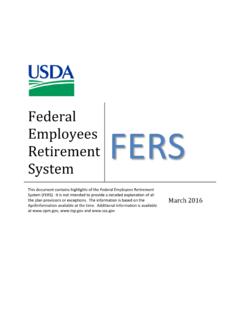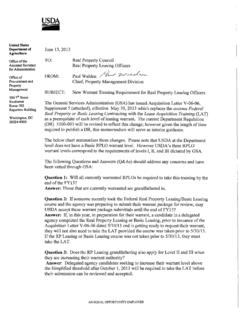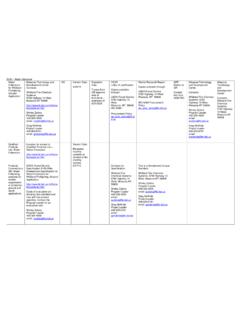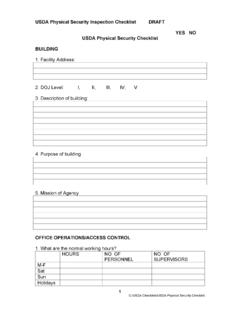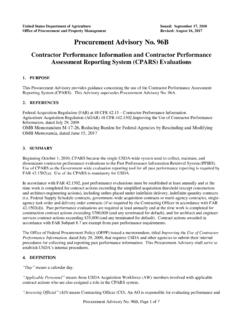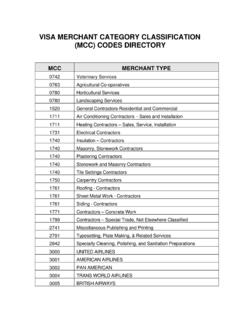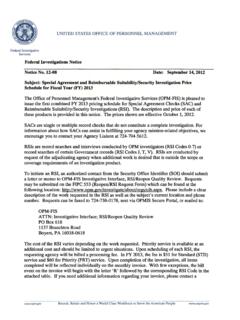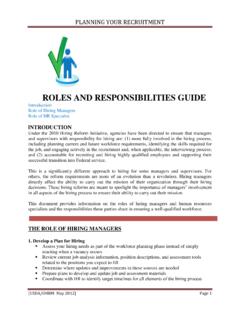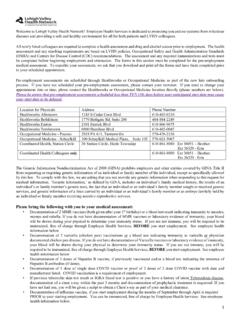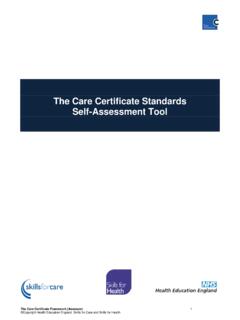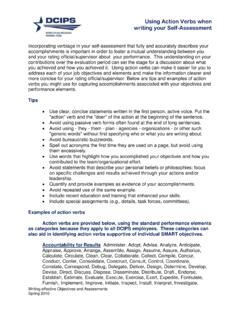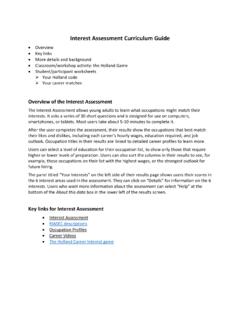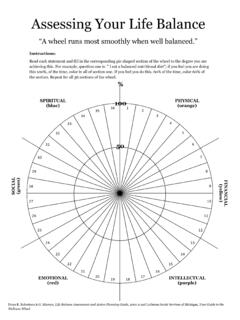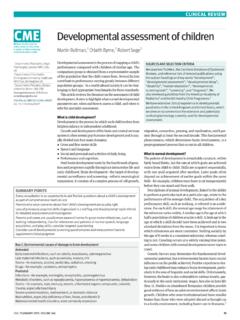Transcription of Performance Accomplishments Self Assessment
1 1 Tracking Performance Accomplishments and Writing Self Assessments What is a self Assessment ? A self Assessment is an employee s opportunity to provide a narrative description of their major Accomplishments related to the Performance elements and associated Performance standards in their Performance plan. In a self Assessment , the employee can describe their major contributions and how they accomplished or did not accomplish their Performance expectations. Additionally, Accomplishments may include other achievements or recognition achieved during the Performance year and training and developmental needs.
2 Note: The rating is based on the substance of the contribution, not how well the contribution is described. Providing the self Assessment does not negate the supervisor s responsibility to provide a narrative of an employee s Accomplishments to support the end of year rating. Suggestions for writing the self Assessment : 1. If you have difficulty identifying your Accomplishments or special strengths for a self Assessment , think about what makes you proud in your work. Often these things calming anxious visitors, solving systems problems, mentoring new employees, coaching or counseling others, writing reports will help you identify your Accomplishments .
3 2. Use the STAR method. In self assessments, you must write convincingly about your Accomplishments , strengths, and skills that is, to write about yourself as a star performer. To do that successfully, use the STAR method. This method involves briefly describing a situation (S) and task (T), the action (A) you took to accomplish it, and the results (R) you achieved. Be sure to consider actions which fall into these categories when deciding upon your STAR actions: the degree of difficulty, one of a kind, first time, high visibility, large volume of work, deadlines, competing priorities, innovation required, scope and impact for the work you performed.
4 Example 1: When I started as a branch manager, annual employee turnover was 25 percent. I implemented an employee satisfaction survey and suggestion program, established coaching plans for supervisors, and instituted a weekly staff meeting. As a result of these efforts, the employee turnover rate is now 10 percent. Example 2 My challenge was to train staff in the new software by the opening of business on Monday, about 3 work days. I designed, planned, and managed around the clock training using classroom instructors, online learning, and targeted job aids. On Monday morning, 96 percent of employees reporting to work had been trained on the new system.
5 2 3. Use specific examples. Specific examples add credibility. Although words like outstanding, dependable, and creative are positive, they do not always paint a convincing picture. Instead of stating that you always maintain good customer relations, cite customer satisfaction surveys, letters of communication, and the absence of any customer complaints about you. 4. Use numbers or metrics whenever possible. Numbers are concrete. They communicate a clear picture. By contrast, a large staff may be 20 or 200. If you are in charge of a large staff, budget, or region, use numbers to show how large it is.
6 Alternatively, state specifically how long you have managed it. 5. Do not exaggerate or lie, even a tiny bit. your self Assessment should make you feel proud and help you speak confidently in a Performance discussion. Exaggerations or misstatements will not give you confidence, in addition to their obvious ethical implications. 6. Use the word I. Many people have been taught in business or technical writing classes not to use the pronoun I. In some instances that may be useful advice, but in a self Assessment it does not make sense. Feel free to write, I hired 200 interns or I wrote the final draft.
7 If you participated in a successful group effort, you are still justified in using I : With my team members, I won the Corporate Communications award in 2004. Vary your sentence structure if you find that you have too many sentences beginning with I. Change I reduced turnaround time by 20 percent within a year to Within a year; I reduced turnaround time by 20 percent. 7. Give relevant information. Most self assessments include specific categories: mission support, program management, teamwork, communication, customer service, problem solving, and so on. Be sure that the examples you give match the category; otherwise, they lose power.
8 Be factual, specific and concise. The self Assessment does not need to be very long. Summarize and highlight your important contributions. (As a guideline write a maximum of two pages per Performance element.) 8. Explain value. Be sure to tie results to organizational goals. For example, as the new ethics coordinator at your organization, you may have conducted 40 ethics briefings in your first three months. The number sounds impressive, but what does it mean? Is there a correlation between your briefings and a reduction in violations or incidents? Whenever possible, translate your hard work into results your reader will value.
9 Consider negative data to illustrate your effectiveness information such as the absence of on the job violations, lawsuits, and grievances. 9. Enlist the help of friend. When you have drafted your self Assessment , ask a friend to review it and answer these types of questions: 3 Are my examples specific? Have I described my strengths accurately? Is every statement clear? Does every statement sound believable? Is all the content pertinent? Have I missed any relevant strengths or Accomplishments ? Guidelines for writing the self Assessment : Restate your Performance elements.
10 Highlight the most significant achievements related to the element for the rating cycle. Remember the self Assessment does not need to be lengthy but highlight what mattered most during the rating cycle. Make the connection between what was done and why it matters to the organization. Cite instances where your actions/ Performance /conduct exemplified or exceeded the Performance standards. Note the challenges you faced and how you responded to those challenges. Overcoming challenges is an important part of the overall Performance rating. Challenges may be technical or interpersonal in nature.

